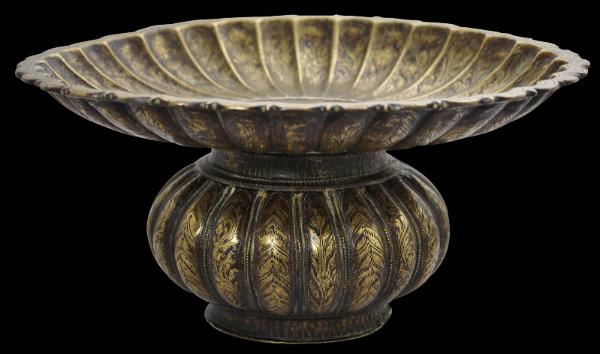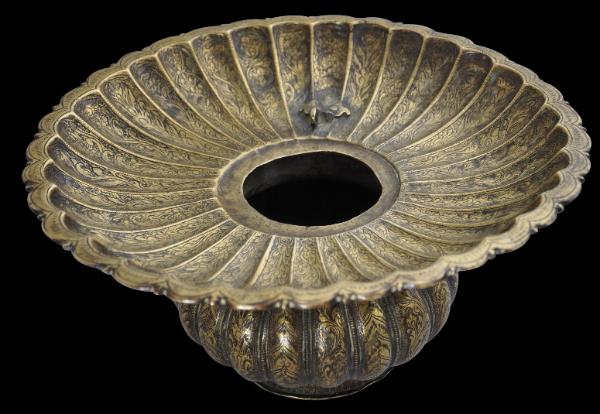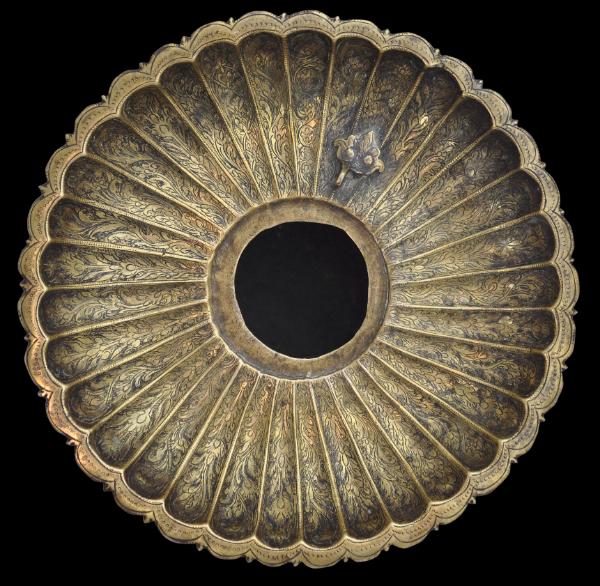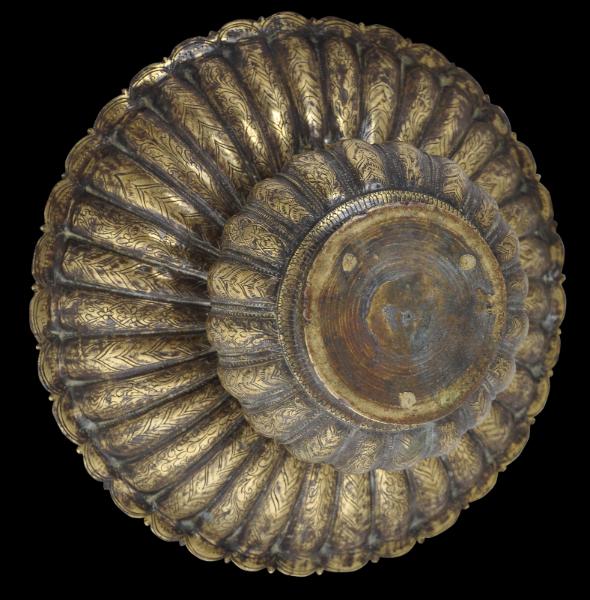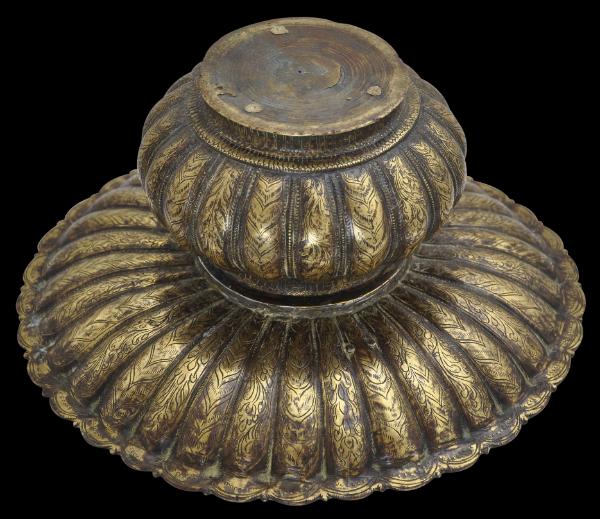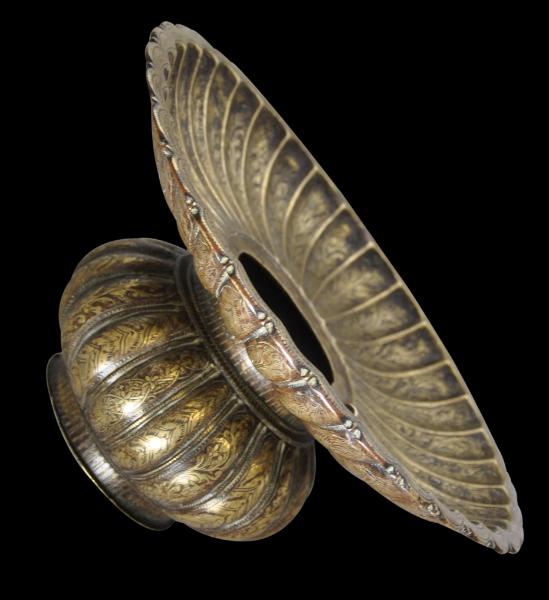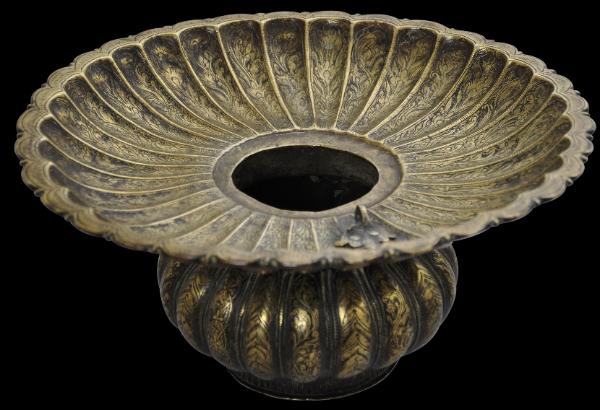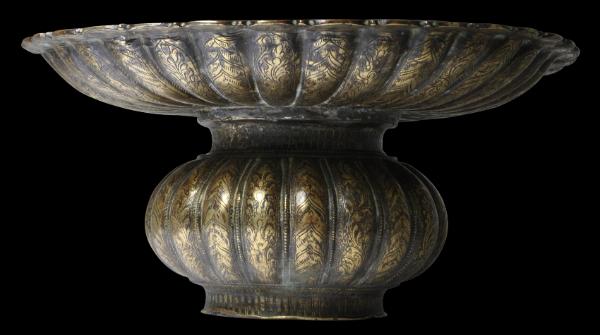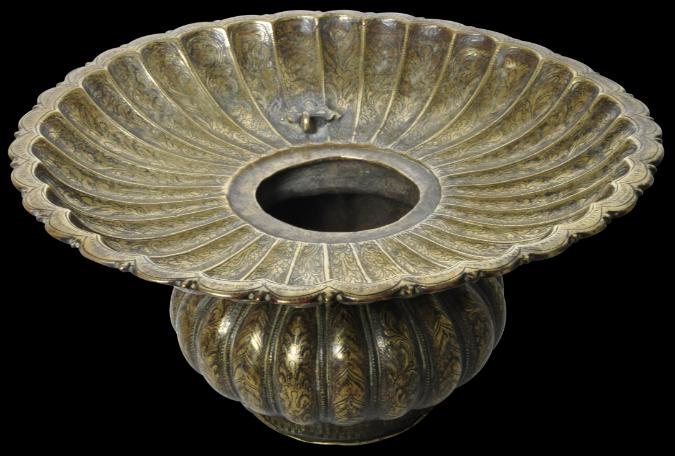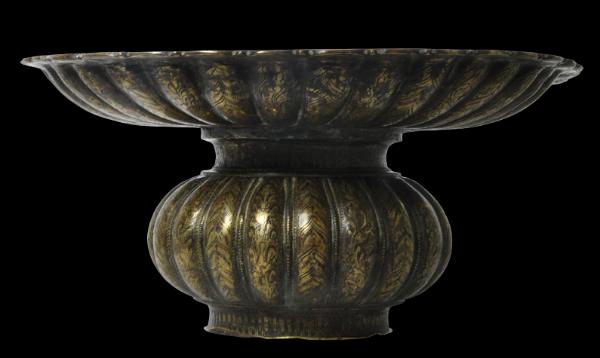
Mughal Indian Ewer Basin
Chased Brass Basin (Sailabchi or Tasht)
Deccan or North-Western India
17th-18th century
diameter: 29cm, height: 14cm
This splendidly sculptural basin with its flattened, spherical base, low ring foot, and wide, concave rim, all with scalloped, ribbed, gadrooned sides, would have been used in conjunction with a ewer in the household of a wealthy merchant or perhaps even in a palace.
It is engraved all over with repeated, flowing leaf designs. The engraving work has been darkened with lac to highlight it.
The overall form is that of an extravagant flower in full bloom – very much in keeping with the Mughal-inspired aesthetic.
Such basins were called
tasht in north India and sailabchi in the Deccan (Zebrowski, 1997, p. 169). The accompanying ewer would have held water for handwashing before and after meals, with the basin there to catch the water as it passed over the hands.
A central grill or grate through which the water would pass would have been present in the example here but this has long been removed, as is often the case for surviving earlier examples.
Many Indian ewers for handwashing survive, but curiously, very few basins have survived.
Indian basins of this type served as prototypes for spittoons of similar dimensions and motifs that were made for the royal household in Thailand to be presented to local and foreign dignitaries.
The example here has plenty of signs of age and use. As can be expected, the edge of the foot has minor denting, and so on. The contours of the basins have been softened and smoothed by use, and overall, the item has a warm patina.
References
Zebrowski, M., Gold, Silver & Bronze from Mughal India, Alexandria Press, 1997.
Provenance
UK art market
Inventory no.: 2574
SOLD

